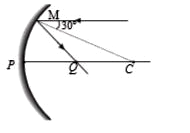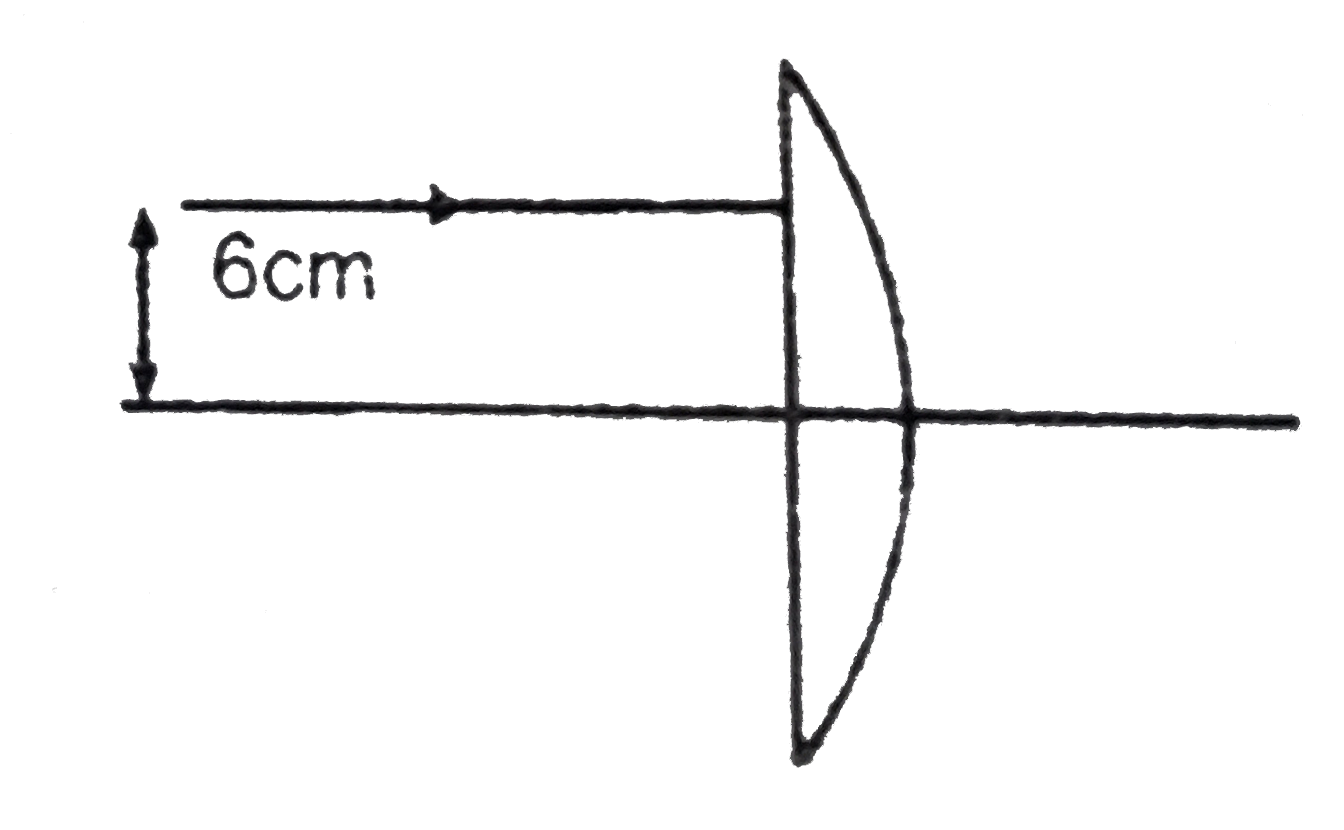A ray parallel to principal axis is incident at 30∘ from normal on concave mirror having radius of curvature R. The point on principal axis where rays are focussed is Q such that PQ is

R2
R√3
2√R−R√2
R(1−1√3)
The correct Answer is:D
Step by step video, text & image solution for A ray parallel to principal axis is incident at 30^(@) from normal on concave mirror having radius of curvature R. The point on principal axis where rays are focussed is Q such that PQ is by Physics experts to help you in doubts & scoring excellent marks in Class 12 exams.
Topper's Solved these Questions
Similar Questions
A ray of light parallel to principal axis after reflection from concave mirror passes through……….. .
View SolutionA light ray parallel to the principal axis is incident (as shown in the figure) on a thin planoconvex lens with radius of curvature of its curved part equal to 10 cm. Assuming that the refractive index of the material of the lens is 4/3 and medium on both sides of the lens is air, find the distance of the point from the lens where this ray meets the principal axis. Find your answer in the form X7cm and fill value of X .
 View Solution
View Solution
Knowledge Check
- Question 1 - Select One
A ray parallel to the principal axis after reflection from a concave mirror will pass through
Aprincipal focusBprincipal axisCradius of curvatureDcentre of curvature - Question 2 - Select One
A point object at 15 cm from a concave mirror of radius of curvature 20 cm is made to oscillate along the principal axis with amplitude 2 mm. The amplitude of its image will be
A2mmB4mmC8mmDNone of these - Question 3 - Select One

Rays parallel to principal axis, incident on the spherical mirror at different heights from principal axis are focused at different points. And due to this reason we cannot define unique focus. This is known as spherical aberration. Angle of incidence θ shown in figure depends on the height of ray above principal axis. Focal length of spherical mirror can be easily written in terms of angle θ shown in figure as follows :
f=R−R2secθ
Here R is radius of curvature of mirror. The light rays which are very close to principal axis are known as paraxial rays and rays far away from principal axis are called marginal rays.
What will be the focal length for ray which is incident at an angle 60∘?AWhat will be the focal length for ray which is incident at an angle 60∘ ?BRC2RDR/2
A point object on the principal axis at a distance 1.5cm in front of a concave mirror of radius of curvature 20cm has velocity ,2mm/s perpendicular to , the principal axis.The velocity of image at that instant will be
View Solution
Rays parallel to principal axis, incident on the spherical mirror at different heights from principal axis are focused at different points. And due to this reason we cannot define unique focus. This is known as spherical aberration. Angle of incidence θ shown in figure depends on the height of ray above principal axis. Focal length of spherical mirror can be easily written in terms of angle θ shown in figure as follows :
f=R−R2secθ
Here R is radius of curvature of mirror. The light rays which are very close to principal axis are known as paraxial rays and rays far away from principal axis are called marginal rays.
Let fP and fm represent the focal length corresponding to paraxial rays and marginal rays respectively thenView Solution
Rays parallel to principal axis, incident on the spherical mirror at different heights from principal axis are focused at different points. And due to this reason we cannot define unique focus. This is known as spherical aberration. Angle of incidence θ shown in figure depends on the height of ray above principal axis. Focal length of spherical mirror can be easily written in terms of angle θ shown in figure as follows :
f=R−R2secθ
Here R is radius of curvature of mirror. The light rays which are very close to principal axis are known as paraxial rays and rays far away from principal axis are called marginal rays.
For paraxial rays focal length is approximatelyView SolutionA point object on the principal axis at a distance 1.5 cm in front of concave mirror of radius of curvature 20 cm has velocity 2mm/s is perpendicular to the principal axis. The velocity of image at that instant will be
View SolutionA point object on the principal axis at a distance 15cm in front of a concave mirror of radius of curvature 20cm has velocity 2mm/s perpendicular to the principal axis. The magnitude of velocuty of image at that instant will be
View Solution

